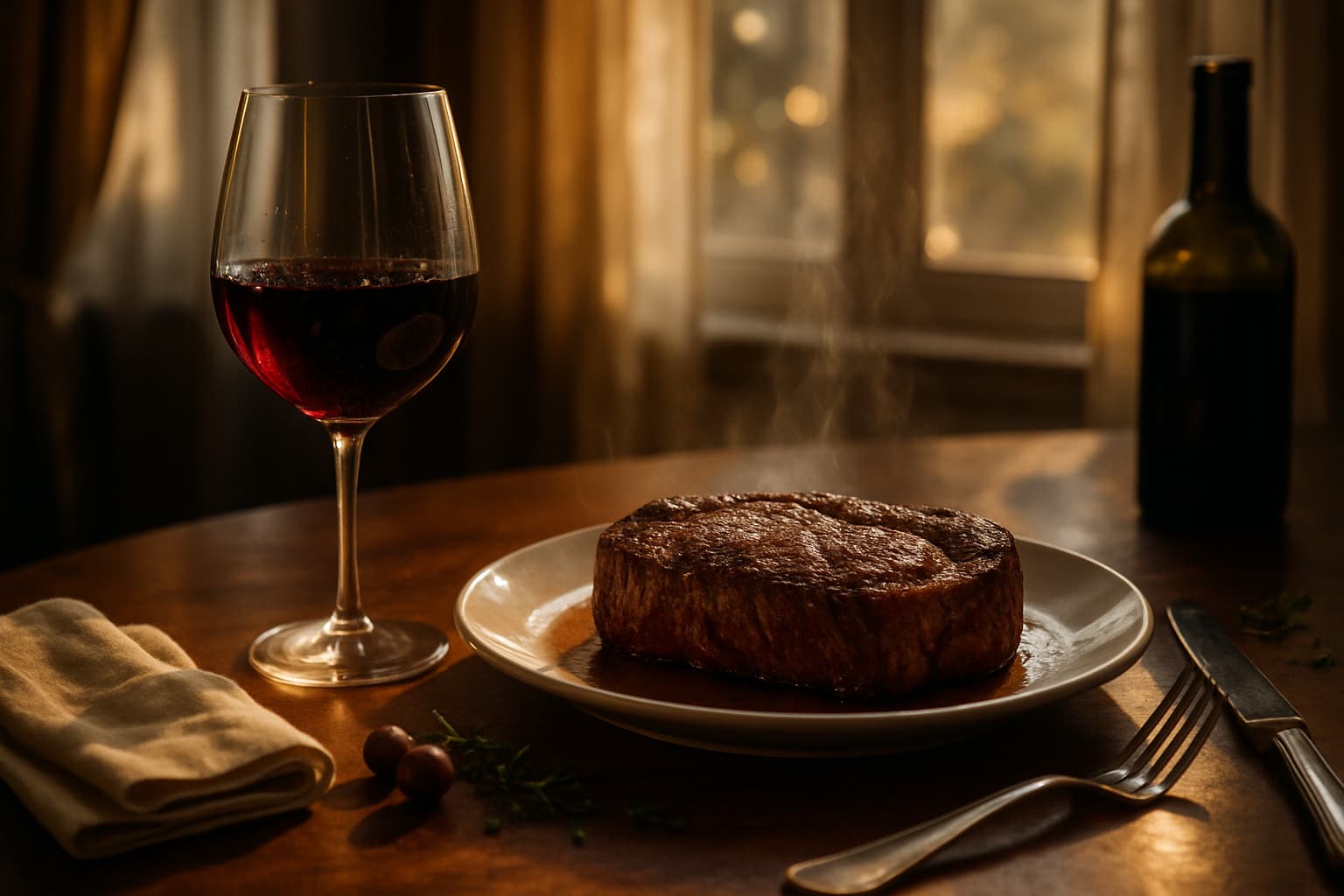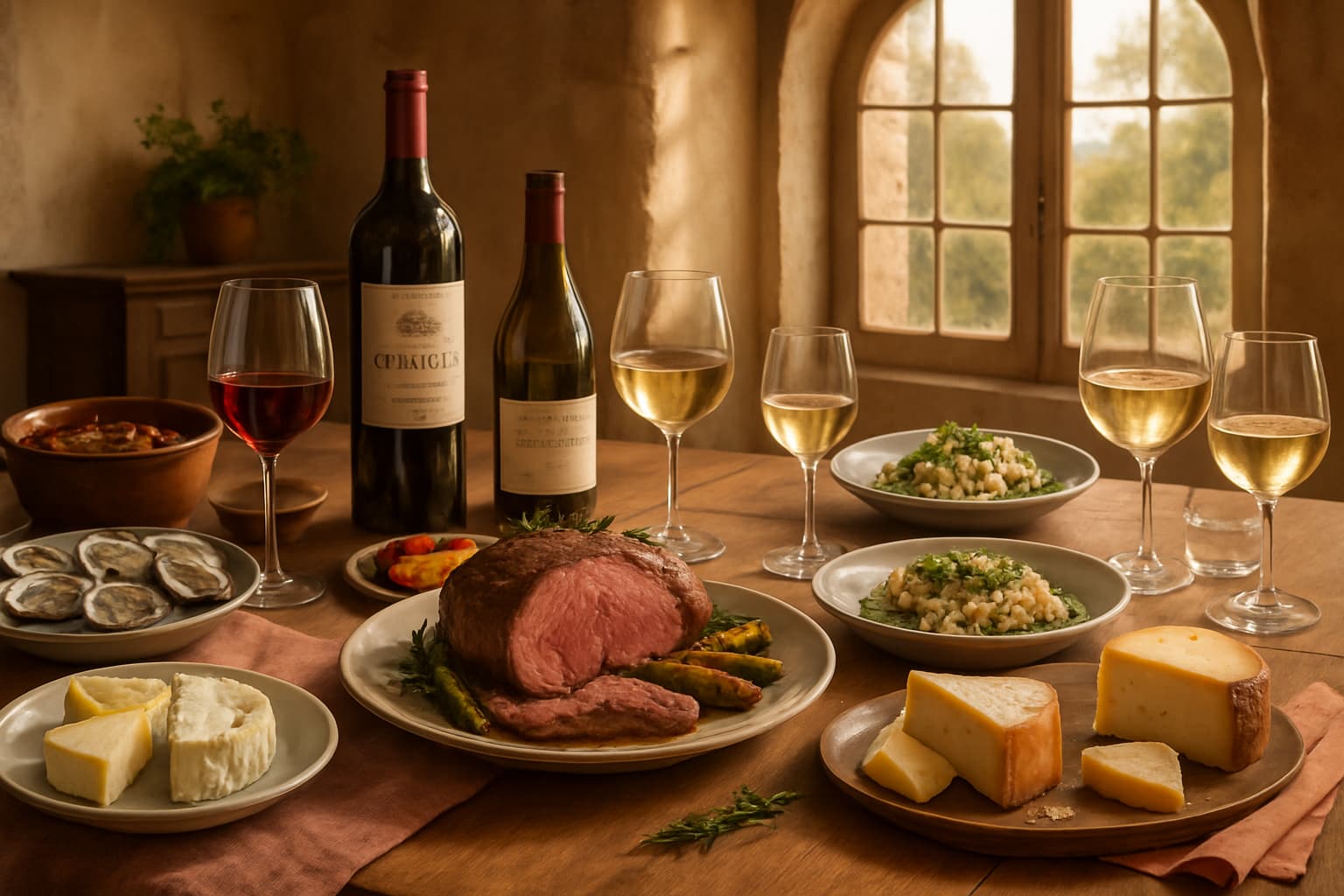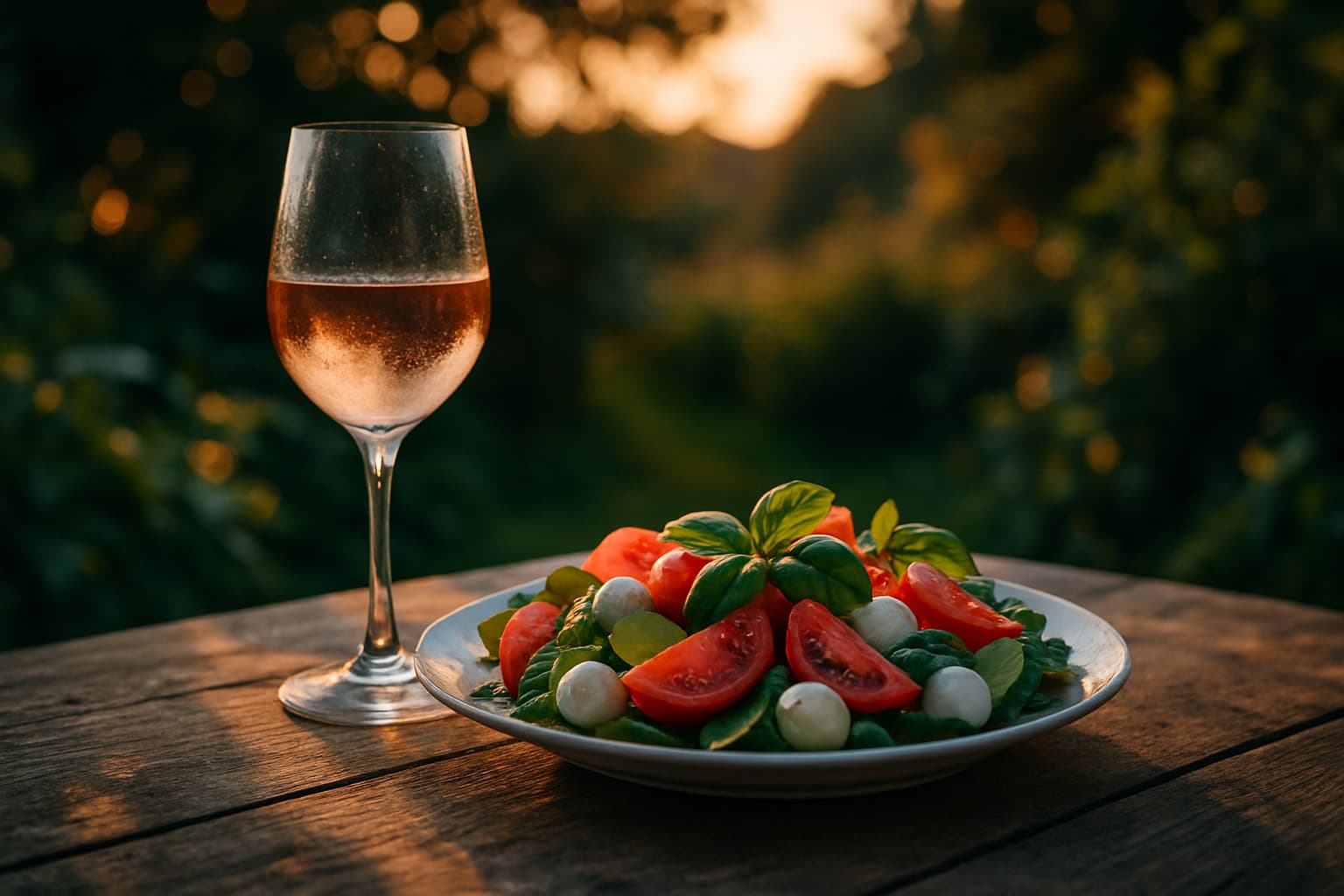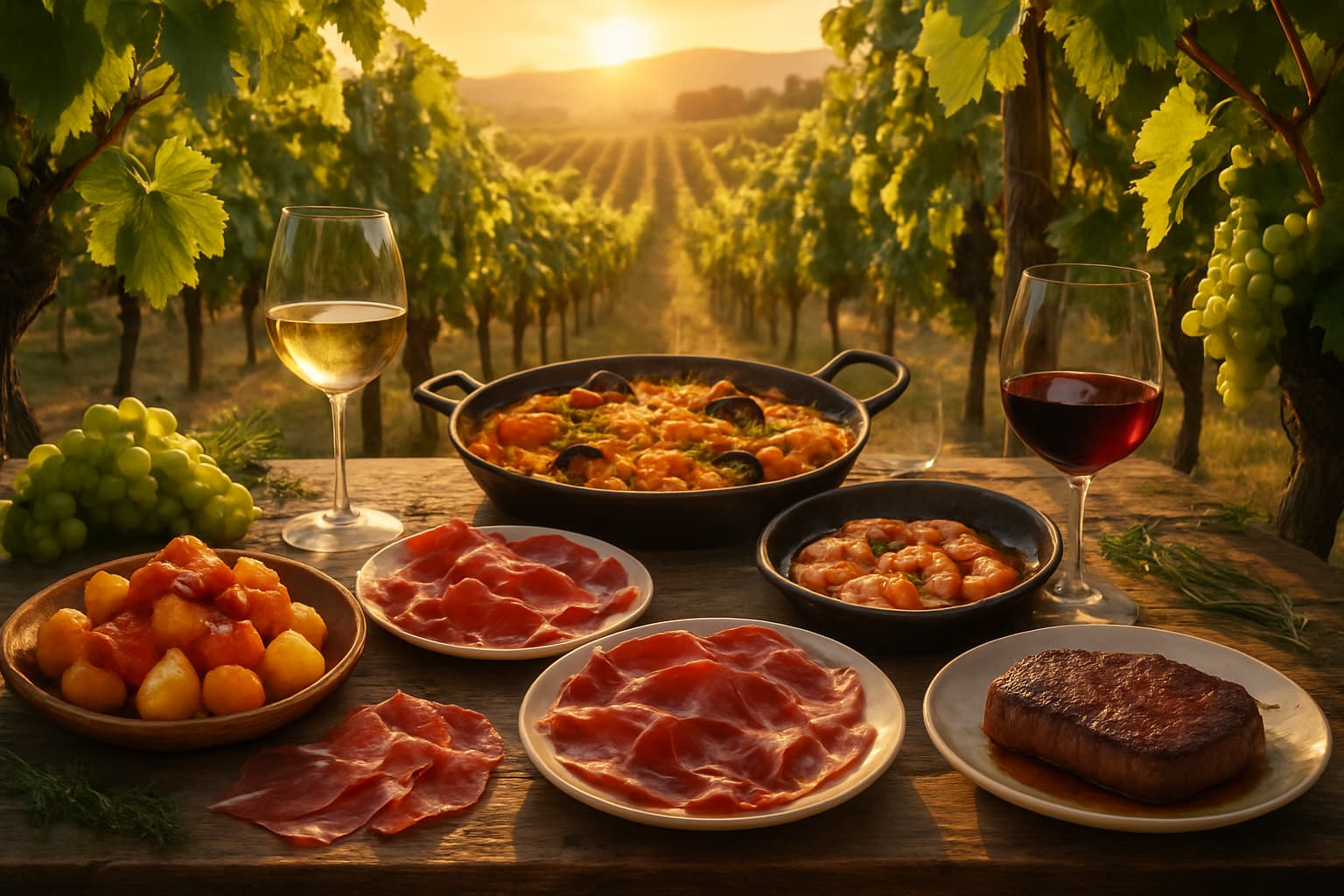

French Wine and Food Pairing: Traditions and Techniques
Bonjour, mes amis! Oh, what a joy it is to gather around the table and discuss the glorious marriage of French wine and food—it's like a symphony where every note dances just right. I'm your guide today, channeling that warm, exuberant spirit we all know and love, with a dash of my own quirky charm. Picture me in the kitchen, sleeves rolled up, glass in hand, as we dive headfirst into this timeless tradition. It's not just about eating and drinking; it's about savoring life's simple pleasures, letting flavors flirt and mingle until your taste buds are doing a little jig. So, pull up a chair, pour yourself a glass, and let's embark on this delectable adventure together. After all, as I've always said, the best meals are the ones that nourish both the body and the soul!
The Essence of French Wine and Food Pairing
Ah, the heart and soul of French cuisine—it's more than just a meal; it's a philosophy, a way of life passed down through generations like a cherished family recipe. In France, pairing wine with food isn't a rigid set of rules; it's an art form, full of passion and playfulness. The French have an innate understanding that the right wine can transform a humble dish into something extraordinary, elevating it to heights that make you pause, close your eyes, and say, "Mon Dieu, that's divine!" Wine isn't just a beverage; it's a companion that complements the flavors of your food, balancing the bold with the subtle and the rich with the light. This tradition dates back centuries, rooted in terroir—the unique soil, climate, and culture of each region—that shapes both the grapes and the local cuisine. It's a reflection of French culture's philosophical foundations: living in harmony with nature, celebrating the seasons, and embracing the nuances of everyday life. I recall my own trips to the French countryside, where a simple picnic with a baguette, cheese, and a local wine turned into a feast for the senses. So, let's not rush; let's linger over this, because in France, mealtime is meant to be savored, not rushed.
Understanding the Basics
Before we explore the specifics, let's lay the foundation. The key to masterful wine and food pairing lies in balance—oh, what a glorious concept! It's like a dance where the wine and the dish move together, each enhancing the other without overpowering it. Flavors should complement, not compete. For instance, a wine that's too heavy might overwhelm a delicate fish, while one that's too light could fade against a robust stew. The French approach considers several factors: the wine's origin, which ties into regional traditions; the season, as fresh ingredients make all the difference; and the dish itself, including its textures, spices, and sauces.
Take acidity, for example—it's the wine's secret weapon, cutting through richness and refreshing the palate. A crisp white like Sauvignon Blanc pairs beautifully with a zesty salad, its bright notes echoing the vinaigrette's tang. Then there's tannin in reds, those astringent compounds that soften with age and complement fatty meats, such as a steak that melts in your mouth. And don't forget body: a full-bodied red from Bordeaux calls for a hearty dish, while a light, ethereal white from the Loire suits something gentle. These nuances are subtle yet profound—it's not just about taste, but the story behind it. The French philosophy emphasizes terroir, where the wine's environment influences its character, creating pairings that feel almost destined. So, my dear friends, start simple: taste, experiment, and trust your instincts. As I always say, cooking and pairing are about joy, not perfection!
Regional Pairings: A Journey Through France
France is a tapestry of regions, each with its own personality, like characters in a grand play. Let's explore how local wines and foods have co-evolved in ways that are as romantic as they are practical. This journey highlights the cultural and historical context, where wine is woven into daily life, influenced by centuries of trade, conquests, and innovation.
Bordeaux: The Land of Grand Reds
In Bordeaux, the wines are bold and unapologetic, much like a passionate debate over dinner. These grand reds, often blends of Cabernet Sauvignon and Merlot, are tannic powerhouses that pair with equally robust companions. Imagine a slow-cooked boeuf bourguignon, with its tender beef and aromatic herbs; the wine's structure cuts through the fat, delivering a clean, satisfying finish. The whites here are impressive too—a Sémillon-based blend with Atlantic oysters, where the wine's subtle oak and fruit notes echo the sea's brininess. Bordeaux's philosophy reflects elegance and excess, nodding to its aristocratic past, with pairings that feature rich, layered dishes fit for royalty. For a quirky twist, try a Bordeaux red with dark chocolate dessert—the tannins play off the sweetness in a surprising way.
Burgundy: Elegance in a Glass
Burgundy whispers elegance with every sip. Pinot Noir and Chardonnay dominate here, wines that are finicky yet rewarding, like a fine French romance. A Burgundian Pinot Noir, with its earthy undertones of red berries and mushrooms, pairs divinely with coq au vin, allowing the chicken's flavors to shine in a harmonious duet. On the white side, a Chardonnay from the region—often unoaked and mineral-driven—complements escargots in garlic butter; the wine's acidity balances the creaminess, making each bite a revelation. Burgundy's terroir philosophy emphasizes subtlety and nuance, where even the slope of a hill can alter a wine's character. These elements make pairings magical, reflecting the region's monastic history and artisanal winemaking.
Loire Valley: The Garden of France
The Loire Valley is a verdant paradise, bursting with fresh produce and versatile wines. A Sancerre Sauvignon Blanc, crisp and herbaceous, is a perfect match for fresh goat cheese salads; the wine's zing cuts through the creaminess, awakening the palate. For reds, a Chinon Cabernet Franc, with its peppery edge, enhances grilled fish or a rustic pâté, drawing out the fruitiness in a delightful interplay. This region's pairings embody a philosophical lightness, celebrating nature's bounty and the joy of seasonal eating—all about freshness and simplicity, with a quirky charm reminiscent of impromptu picnics by the river.
Alsace: A Blend of Cultures
In Alsace, French finesse meets German heartiness in a delightful cultural fusion. Aromatic whites like Riesling and Gewürztraminer thrive here, ideal for spicy fare. Try a Riesling with choucroute garni; the wine's slight sweetness tames the sauerkraut's tang, creating balance amid the spices. Gewürztraminer, with its exotic notes of lychee and rose, pairs fabulously with Asian-fusion dishes, like a mild curry—it's that unexpected twist that keeps things exciting. Alsace's pairings reflect its borderland history, blending influences with unpretentious warmth.
Seasonal Pairings: Celebrating the Rhythms of Nature
The French live by nature's rhythms, and so should your pairings. Seasons influence not only what's on your plate but also what's in your glass, honoring the idea that food and wine are gifts from the earth.
Spring: A Time of Renewal
In spring, everything feels light and alive. A Muscadet with mussels is pure poetry—the wine's minerality enhances the shellfish's sweetness, evoking the first blooms.
Summer: The Joys of Al Fresco Dining
Summer calls for rosés from Provence, chilled and fruity, alongside salads or grilled vegetables. It's carefree, like a lazy afternoon fête.
Autumn: Harvest Time
Autumn brings heartier fare; a Bordeaux red with roasted game captures the season's earthy depth.
Winter: A Time for Warmth and Comfort
In winter, a Rhône Syrah with braised meats provides comforting warmth, wrapping you in flavorful layers.
Techniques for Perfect Pairing
To master this, match the wine's weight to the dish, consider sauces, cooking methods, and even cheese. For a creamy sauce, opt for acidic wines; for grilled meats, choose tannic reds. And cheese—oh, the possibilities!
Conclusion: Savoring the Art of Pairing
As we wrap up this joyous exploration, remember, mes amis, French wine and food pairing is about creating memories, one delicious bite at a time. Experiment, enjoy, and let your heart guide you. Raise your glass, take a savoring sip, and bon appétit—may your meals always be magnificent!
More from Wine and Food Pairing
Master the Language of Wine
Tannins
Tannins are astringent compounds found in wine that contribute to its texture and aging potential, often causing a drying or puckering sensation in the mouth. They are derived from grape skins, seeds, and stems, as well as from oak barrels used during aging.
/ˈtænɪnz/
Malic acid
Malic acid is a naturally occurring organic acid found in grapes that contributes to the tart, green apple-like flavor and crispness in wine. It plays a significant role in the taste and acidity of wine.
/mælɪk ˈæsɪd/
Filtration
Filtration in winemaking is the process of removing solid particles from wine to clarify and stabilize it before bottling, using various types of filters to achieve different levels of clarity and remove unwanted elements like yeast, bacteria, and sediment.
/fɪlˈtreɪʃən/
Oxidation
Oxidation in wine is a chemical reaction between the wine and oxygen that can change its flavor, aroma, and color. This process can be beneficial or detrimental depending on the extent and context of the exposure.
/ˌɒksɪˈdeɪʃən/
Microclimate
Microclimate refers to the unique climate conditions of a small, specific area within a larger region, significantly influencing grapevine growth and the characteristics of the resulting wine.
/ˈmīkrōˌklīmit/
Subscribe to Our Newsletter
Get weekly wine recommendations, vineyard news, and exclusive content delivered to your inbox.

